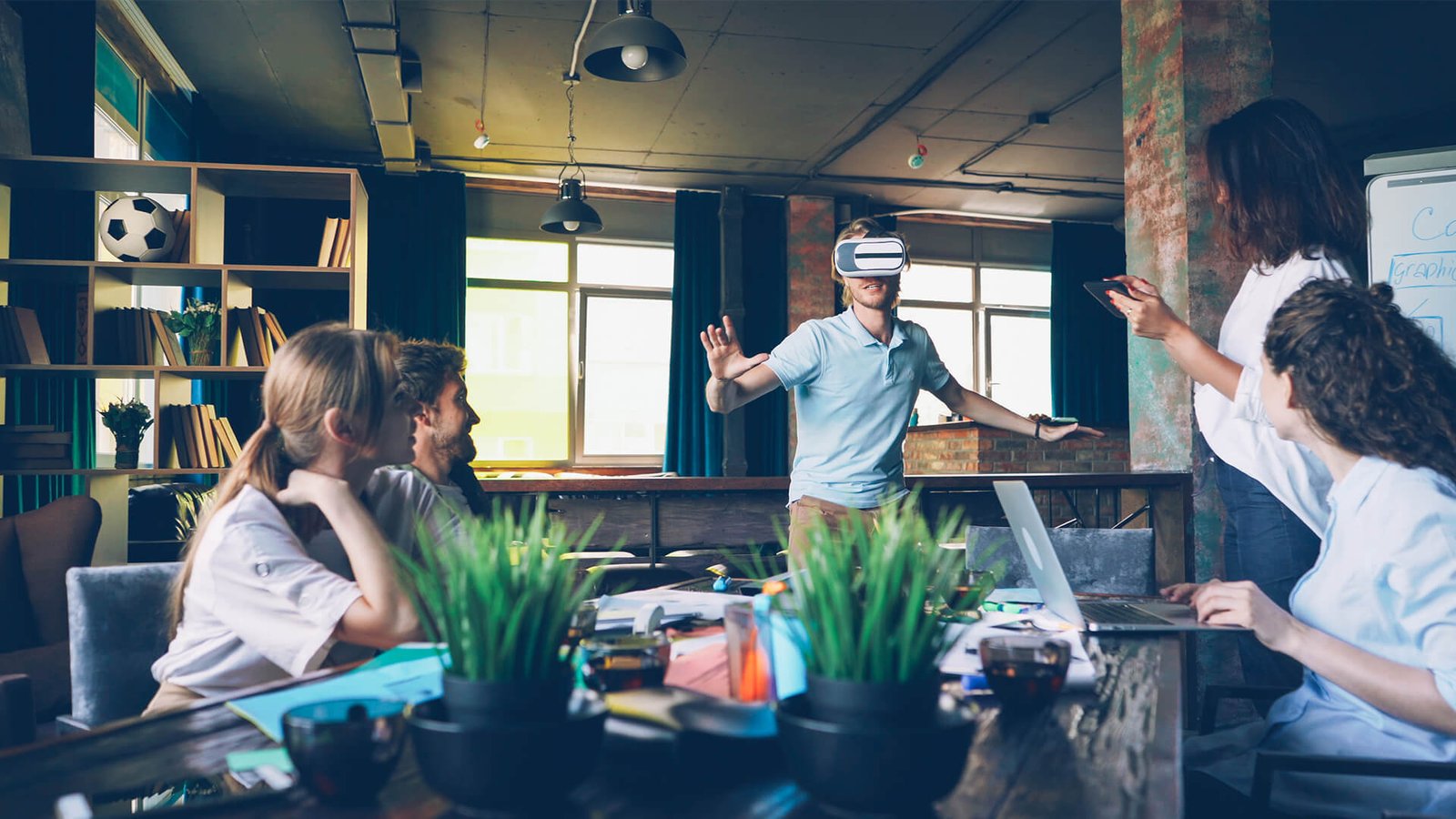
Microlearning and AI-Enhanced Content Creation
The rapid digitalization of higher education, accelerated by societal shifts and the COVID-19 pandemic, has necessitated a reevaluation of traditional teaching methods. As university attendance wanes and online learning becomes the norm, educators face the dual challenge of maintaining student engagement and ensuring effective knowledge transfer. In this context, microlearning—a pedagogical strategy that delivers content in small, focused units—has emerged as a promising solution. The integration of artificial intelligence (AI) in microlearning content creation further amplifies its potential by automating labor-intensive tasks, personalizing learning experiences, and keeping materials up to date. This article argues that the combination of microlearning and AI-driven content creation represents a transformative approach to education, particularly in higher education and STEM fields, by fostering engagement, accommodating diverse learner needs, and addressing the limitations of traditional instructional models.
The Rationale for Microlearning in Modern Education
Microlearning is characterized by the delivery of educational content in brief, targeted bursts, often lasting no more than 15 minutes, and is designed to be accessible anytime and anywhere (Gherman et al., 2021). This approach aligns with the learning preferences of Generation Z students, who demand flexible, device-agnostic educational experiences that fit seamlessly into their daily routines. Studies indicate that microlearning not only caters to shorter attention spans but also enhances retention and application of knowledge by focusing on actionable, context-specific information (Saha et al., 2025; Gherman et al., 2021).
Empirical evidence from large-scale university courses supports the efficacy of microlearning. For instance, the transition to microlearning videos, online exercises, and e-assessments during the COVID-19 pandemic at the Technical University Berlin did not negatively impact student outcomes compared to traditional lectures; rather, it enabled greater accessibility and was well received by students (Netzer & Mittelstädt, 2021). These findings underscore microlearning’s suitability for modern learners, particularly in STEM disciplines where conceptual understanding and skill mastery are paramount.
AI-Enhanced Content Creation: Reducing Barriers and Scaling Personalization
While the pedagogical benefits of microlearning are clear, its widespread adoption in higher education has been hampered by the substantial effort required to create high-quality, modular materials (Saha et al., 2025; Gherman et al., 2021). Here, AI—especially generative models like ChatGPT offers a transformative solution. AI tools can automate the transcription and refinement of lecture videos, generate interactive quizzes, digital flashcards, mini-lessons, and scenario-based exercises, and adapt content to students’ evolving needs (Saha et al., 2025).
By streamlining content production, AI liberates educators from repetitive tasks, allowing them to focus on higher-order instructional design and student support. For example, Saha et al. (2025) developed a pipeline using OpenAI’s Whisper for transcription and ChatGPT for content refinement and generation, which significantly reduced the time and labor involved in creating microlearning elements for computer science courses. The resulting materials were not only accurate and engaging but also adaptable, supporting ongoing curriculum updates and iterative improvement based on student feedback.
Moreover, AI-powered adaptive microlearning systems can provide personalized recommendations and remediation. Gherman et al. (2021) describe a case study where students’ prerequisite knowledge was assessed, and targeted microlearning units were recommended to address individual deficiencies. This personalized approach ensures that learners can progress at their own pace, receive support where needed, and build a solid foundation for advanced topics—a crucial advantage in disciplines with cumulative knowledge structures like computer science and engineering.
Microlearning in Practice: Engagement, Accessibility, and Learning Outcomes
Microlearning’s success is not limited to formal educational settings. Innovative implementations, such as embedding microlearning tasks within social news feeds and websites, demonstrate its potential to integrate learning into everyday activities (Kovacs, 2021). Kovacs’ Edvertisements project inserted interactive vocabulary quizzes into users’ Facebook feeds and web pages, capitalizing on moments of idle browsing to promote language learning. The study found that users engaged significantly more with in-feed microlearning tasks than with external learning links, and that even brief, opportunistic engagements contributed to measurable vocabulary gains (Kovacs, 2021).
Similarly, research on mobile microlearning during commutes highlights the importance of context-aware delivery and device choice. Janaka et al. (2021) found that optical head-mounted displays (OHMDs) facilitated seamless, opportunistic microlearning by reducing the cognitive costs of switching attention between tasks and surroundings. This suggests that microlearning, especially when supported by AI and suitable technology platforms, can exploit micro-moments for meaningful learning even in fragmented, mobile environments.
In more traditional academic contexts, the integration of microlearning videos, online exercises, and virtual assessments has demonstrated sustained or improved learning outcomes. Netzer and Mittelstädt (2021) reported that the use of short, scripted videos and online quizzes in a large introductory physics course maintained concept mastery and exam performance comparable to pre-pandemic levels, while providing greater flexibility and accessibility. Student feedback highlighted the value of having materials available online and the ability to self-pace learning—core strengths of the microlearning approach.
Addressing Challenges: Quality, Oversight, and the Role of Educators
Despite its advantages, microlearning and AI-generated content present distinct challenges. Concerns include the potential for superficial understanding due to overly fragmented content, the propagation of errors or biases in AI-generated materials, and the risk of over-reliance on automation at the expense of critical thinking and depth (Saha et al., 2025; Gherman et al., 2021). To mitigate these risks, human oversight remains essential. Saha et al. (2025) emphasize the need for educators to review and contextualize AI-generated content, ensuring its accuracy, relevance, and alignment with learning objectives. Likewise, feedback mechanisms and data analytics can inform ongoing refinement of microlearning units based on student performance and engagement (Gherman et al., 2021).
Moreover, the design of microlearning experiences should be informed by cognitive principles such as cognitive load theory and spaced repetition, which optimize content chunking and retention (Saha et al., 2025; Kovacs, 2021). Platforms should also accommodate diverse learner preferences and circumstances, offering adaptive pathways and multimodal formats (Janaka et al., 2021).
Conclusion
The convergence of microlearning and AI-enhanced content creation offers a powerful, scalable, and adaptive model for 21st-century education. By breaking down complex subjects into manageable units and leveraging AI for rapid, personalized content development, educators can better address the needs of diverse learners, foster sustained engagement, and bridge gaps in knowledge. Empirical evidence from STEM and language learning contexts demonstrates that microlearning—whether embedded in university courses, social media, or mobile environments—can yield meaningful learning gains without sacrificing depth or rigor. However, the success of this approach hinges on thoughtful instructional design, vigilant quality assurance, and the continued centrality of educators as guides and mentors. As educational institutions adapt to a rapidly changing landscape, embracing microlearning and AI-driven content creation stands as a pragmatic and evidence-based strategy for enhancing both the accessibility and effectiveness of higher education.
References
Gherman, O., Turcu, C. E., & Turcu, C. O. (2021). An approach to adaptive microlearning in higher education. 15th International Technology, Education and Development Conference Online Conference. INTED2021 Proceedings. http://arxiv.org/pdf/2205.06337v1
Janaka, N., Wu, X., Zhang, S., Zhao, S., & Slovak, P. (2021). Visual behaviors and mobile information acquisition. ACM, 1(1), 1-35. http://arxiv.org/pdf/2202.02748v1
Kovacs, G. (2021). Edvertisements: Adding microlearning to social news feeds and websites. Stanford University. http://arxiv.org/pdf/2102.01865v1
Netzer, C., & Mittelstädt, A. (2021). Incorporating microlearning videos, online exercises and assessments into introductory physics. Technical University Berlin. http://arxiv.org/pdf/2108.01385v1
Saha, S., Rahbari, F., Sadique, F., Velamakanni, S. K. C., Farooque, M., & Rothwell, W. J. (2025). Next-gen education: Enhancing AI for microlearning. Proceedings of the 2025 ASEE Annual Conference & Exposition. American Society for Engineering Education. http://arxiv.org/pdf/2508.11704v1



